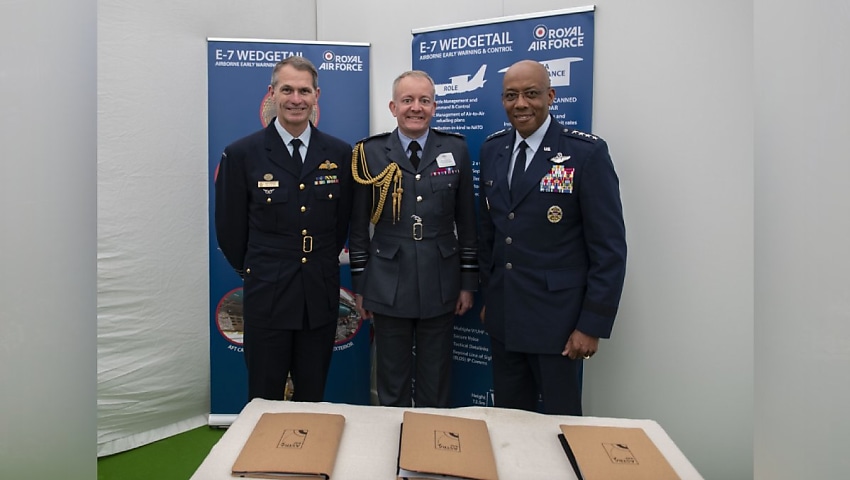The Royal Australian Air Force, Royal Air Force, and US Air Force leadership have signed a joint vision trilateral statement for the cooperative development of E-7A Wedgetail airborne early warning and control aircraft.
RAAF Chief Air Marshal Robert Chipman, UK Air Chief Marshal Sir Richard Knighton, and USAF Chief of Staff General CQ Brown signed the mutual agreement of intent to work collaboratively, during the Royal International Air Tattoo at RAF Fairford, United Kingdom on 14 July.
“This joint vision statement is a testament to the close relationship shared historically by our three Air Forces,” said AIRMSHL Chipman.
“I look forward to continuing our joint interests in this versatile and impressive capability.”
The trilateral agreement confirms the commitment from all three nations to work together on Wedgetail capability development, evaluation and testing, interoperability, sustainment, operations, training, and safety.
“The signing of this this joint vision statement by our three Air Forces is an exciting opportunity that will allow us to work collaboratively to develop our Wedgetail fleets to ensure that they remain ready to provide airborne early warning and control as the threats and challenges we face change,” Sir Richard Knighton said.
Six of the twin-engine airborne early warning and control aircraft are already in service with the Royal Australian Air Force, while the UK has plans to field three beginning in 2024. Each aircraft provides airborne moving target indication, battle management, command and control, as well as use of multi-role electronically scanned array radar.
“Collaboration and interoperability are critical to our warfighting advantage. Signing this joint vision statement represents another step in the long-term, enduring commitment we have to the future and to the security of our three countries,” Gen Brown said.
“The relationship between the United Kingdom, Australia, and the United States is more robust than ever and we share a mutual understanding of the challenges we face in the air domain and the need to address them.”


